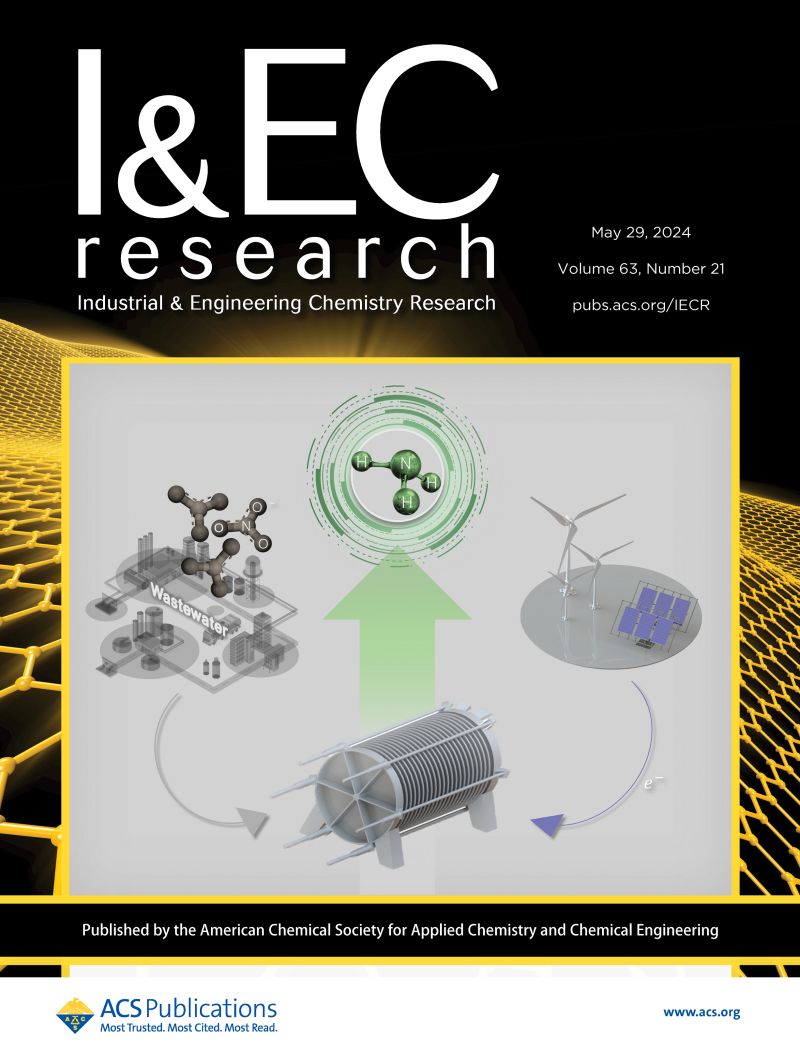Role of Surface Hydrophobicity in the Coalescence-Induced Bubble Detachment Kinetics
IF 3.8
3区 工程技术
Q2 ENGINEERING, CHEMICAL
引用次数: 0
Abstract
Bubble detachment plays a crucial role in preventing excessive accumulation in gas–liquid reactors and improving the mass transfer efficiency. This study investigates the effect of surface hydrophobicity on bubble detachment induced by coalescence through high-speed dynamic experiments and numerical simulations. The results show that on surfaces with low hydrophobicity (contact angles of 15 and 25°), bubbles detach because the inner contact line contracts relatively slowly, allowing the outer contact line to coalescence quickly. In contrast, on highly hydrophobic surfaces (contact angles of 35 and 45°), the simultaneous contraction of both the inner and outer contact lines prevents bubble jumping. Numerical simulations indicate that low-hydrophobicity surfaces generate sufficient kinetic energy through the pressure gradient. As hydrophobicity increases, some of the energy is dissipated through liquid-film drainage, weakening internal convection and reducing the intensity of the upward flow, which ultimately prevents bubble detachment. Energy analysis further indicates that bubble coalescence shows a weak dependence on the Bo number, while the magnitude of the adhesion energy is the key factor determining bubble jumping. When the adhesion energy exceeds approximately 20% of the released surface energy, the coalesced bubble is unable to detach.

表面疏水性在聚结诱导气泡脱离动力学中的作用
气泡分离对于防止气液反应器内的过度积聚和提高传质效率具有至关重要的作用。通过高速动态实验和数值模拟研究了表面疏水性对聚并诱导气泡脱离的影响。结果表明,在疏水性较低的表面(接触角分别为15°和25°)上,由于内部接触线收缩相对较慢,使得外部接触线快速结合,气泡分离。相反,在高度疏水表面(接触角为35°和45°),内外接触线同时收缩可防止气泡跳跃。数值模拟表明,低疏水性表面通过压力梯度产生足够的动能。随着疏水性的增加,部分能量通过液膜排水耗散,减弱内部对流,降低向上流动的强度,最终阻止气泡脱离。能量分析进一步表明,气泡聚并对Bo数的依赖性较弱,而附着能的大小是决定气泡跳跃的关键因素。当附着能超过释放表面能的约20%时,聚并气泡无法分离。
本文章由计算机程序翻译,如有差异,请以英文原文为准。
求助全文
约1分钟内获得全文
求助全文
来源期刊

Industrial & Engineering Chemistry Research
工程技术-工程:化工
CiteScore
7.40
自引率
7.10%
发文量
1467
审稿时长
2.8 months
期刊介绍:
ndustrial & Engineering Chemistry, with variations in title and format, has been published since 1909 by the American Chemical Society. Industrial & Engineering Chemistry Research is a weekly publication that reports industrial and academic research in the broad fields of applied chemistry and chemical engineering with special focus on fundamentals, processes, and products.
 求助内容:
求助内容: 应助结果提醒方式:
应助结果提醒方式:


